12th Jun 2024
John Jenkins Designs Preview: Bunker Hill
THE BATTLE OF BUNKER HILL, 17th JUNE 1775.
THE ASSAULT ON THE REDOUBT AT BREED’S HILL
Boston was the third largest town in North America, and stood on a Peninsula connected to the mainland by a neck just wide enough to cross at high tide. The harbour, large enough to be strategically significant, and central to the town’s economy, was formed by a chain of islands stretching out to sea, guarded by reefs and ledges.
North west of Boston was Charlestown, a largely rural peninsula one and a half miles long. Charlestown stood at the south east corner with three hills behind it. Bunker’s Hill, nearest the neck of the Peninsula, Breed’s Hill 200 yards above the town and Moulton’s Hill to the north east.
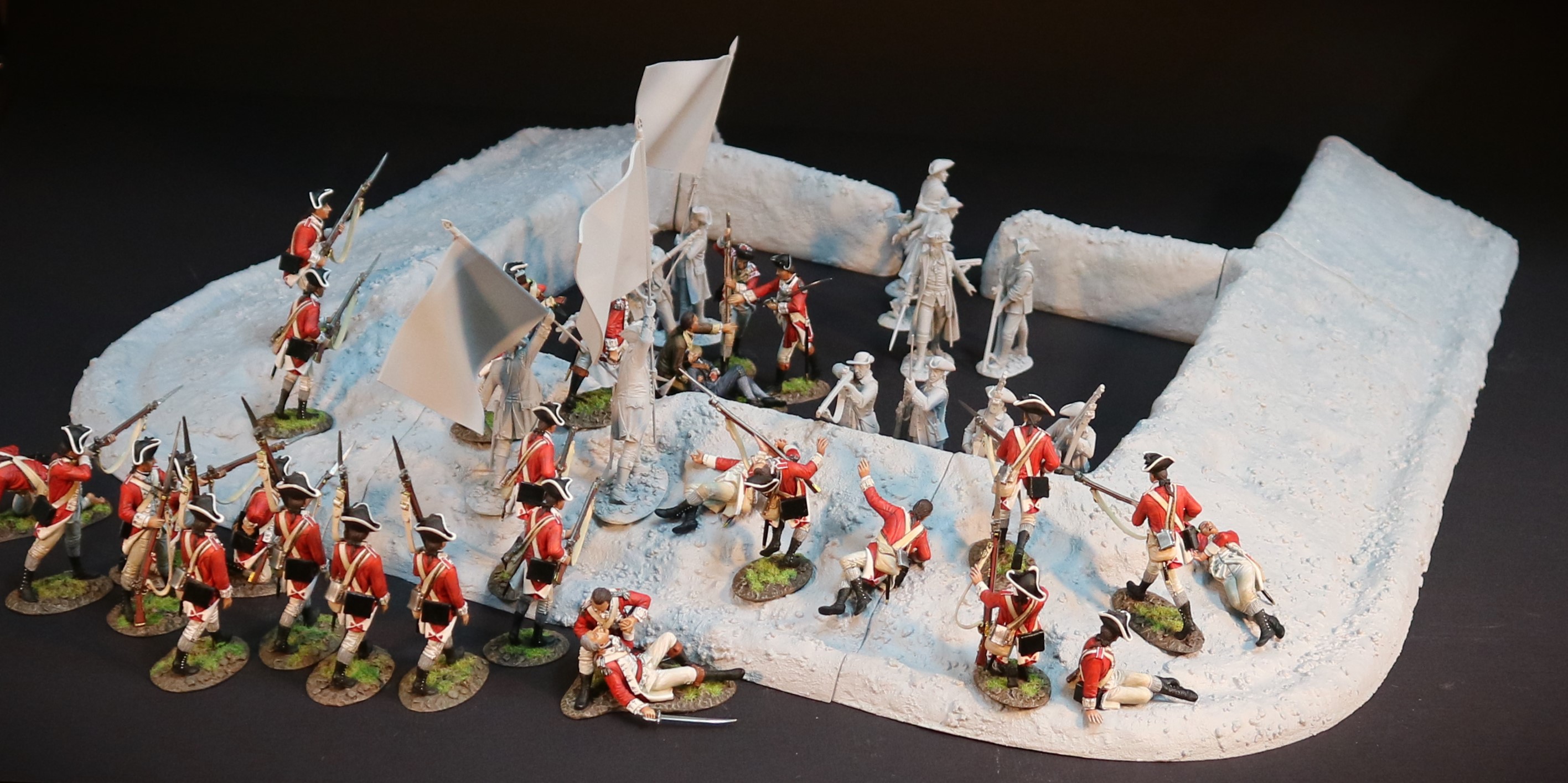
On the 16th June 1775, 3 detachments from Massachusetts regiments under the command of Colonel William Prescott and engineer Captain Richard Gridley, crossed the Charlestown neck and arrived at Bunker Hill.
Captain Richard Gridley and Prescott disagreed as to where they should locate their defense. Some work was performed on Bunker Hill, but Breed’s Hill was closer to Boston and viewed as being more defensible, and they decided to build their primary redoubt there.
Prescott and his men began digging a square fortification about 130 ft a side with ditches and earthen walls. The walls of the redoubt were about 6 feet high.
Work began at midnight, and around 4am one of the British warships spotted the earthworks on Breed’s Hill and opened fire.
The British command agreed that the works posed a significant threat, but were at this time sufficiently incomplete and isolated to offer a chance of a successful attack.
The original British plan was to bypass the redoubt to the north and capture Bunker’s Hill and the neck of the peninsula, thus isolating the redoubt on Breed’s Hill.
The Americans repulsed two British assaults, with significant British casualties. The British captured the redoubt on their third assault, after the defenders had run out of ammunition. The colonists retreated over Bunker Hill, leaving the British finally in control of the Peninsula.
The battle was a tactical victory for the British, but it proved to be a sobering experience for them; they incurred many more casualties than the Americans had sustained, including many officers. The battle had demonstrated that inexperienced militia were able to stand up to regular army troops in battle. Subsequently, the battle discouraged the British from any further frontal attacks against well defended front lines. American casualties were much fewer, although their losses included General Joseph Warren, and Major Andrew McClary, the final casualty of the battle.
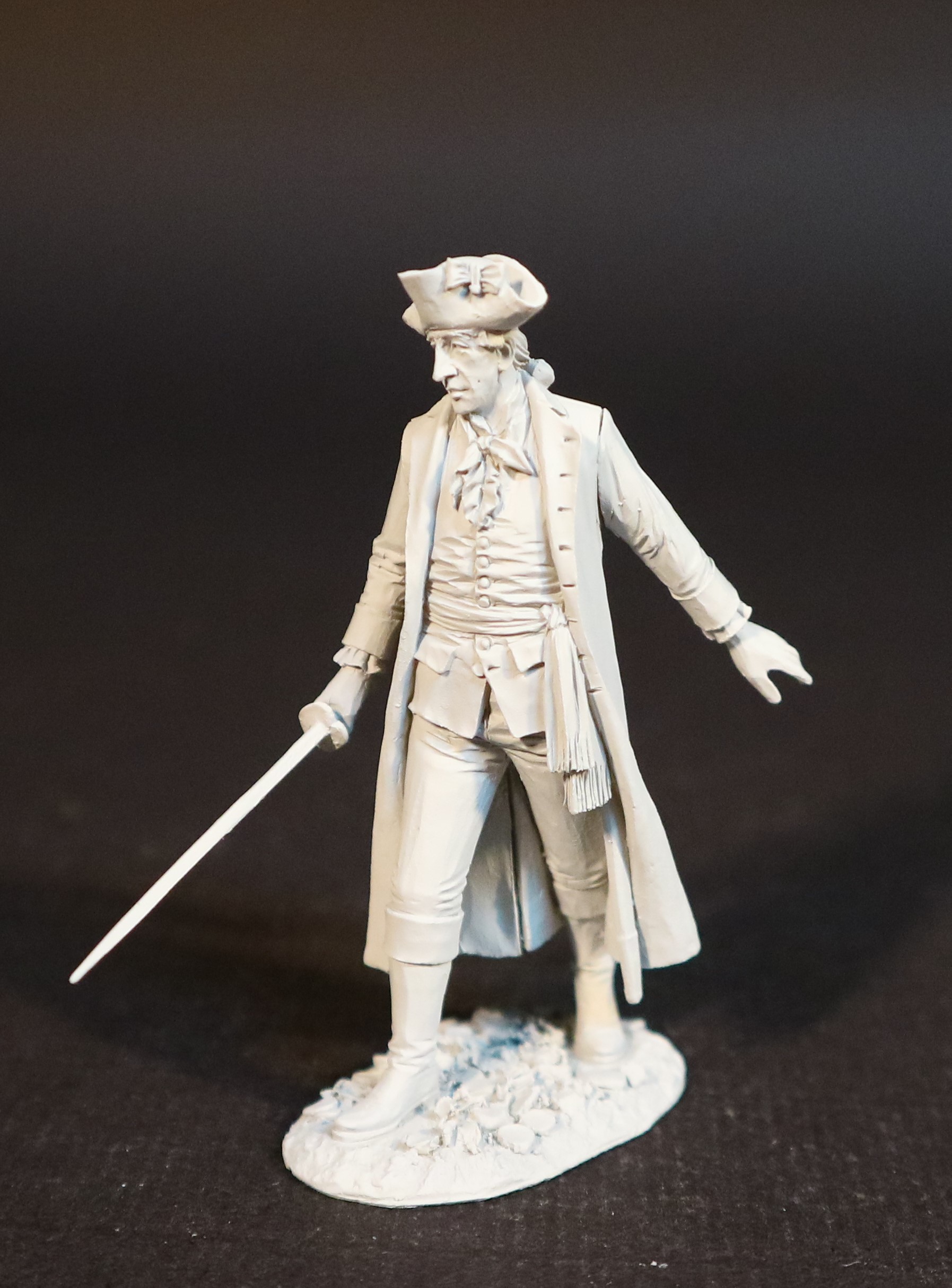
William Prescott (February 20th, 1726 – October 13th 1795) was a Colonel in the Revolutionary War, who commanded the American forces in the Battle of Bunker Hill. Prescott is known for his order to his soldiers, “Do not fire until you see the whites of their eyes”, so that the rebel troops would shoot at the enemy at shorter ranges, and therefore more accurately and lethally, and also conserve their limited stocks of ammunition.
On the 16th of June 1775, General Artemas Ward, the commander in chief, issued an order directing Prescott and over a thousand men to proceed to Bunker Hill and erect a fortification.
The detachment sterted from Cambridge Common at dark, proceeding silently to Bunker Hill. There at about 11 o’clock pm, the troops commenced building the entrenchments as laid out by Captain Richard Gridley.
“The breast work or redoubt was only constructed of such earth as the party had thrown up after the middle of the night and was not more than breast high to a man of medium height. Colonel Prescott being a very tall man, six feet and two or three inches in height, his head and shoulders and a considerable portion of his body must have been exposed during the whole of the engagement. He wore a three-cornered cocked hat and a ban-yan or calico coat. After one of his men was killed by cannon ball, Prescott, perceiving that this had made some of the soldiers sick at heart, mounted tile para-pet and walked leisurely around it, cheering his soldiers by approbation and humor. His clothing was repeatedly spattered with the blood and the brains of the killed and wounded.”
Prescott’s men twice drove back the British assaults on the redoubt. When the British made a third attempt, his men were almost out of ammunition. After a final volley, he ordered a retreat from the redoubt. He was one of the last men to leave the defences, parrying bayonet thrusts with his ceremonial saber.
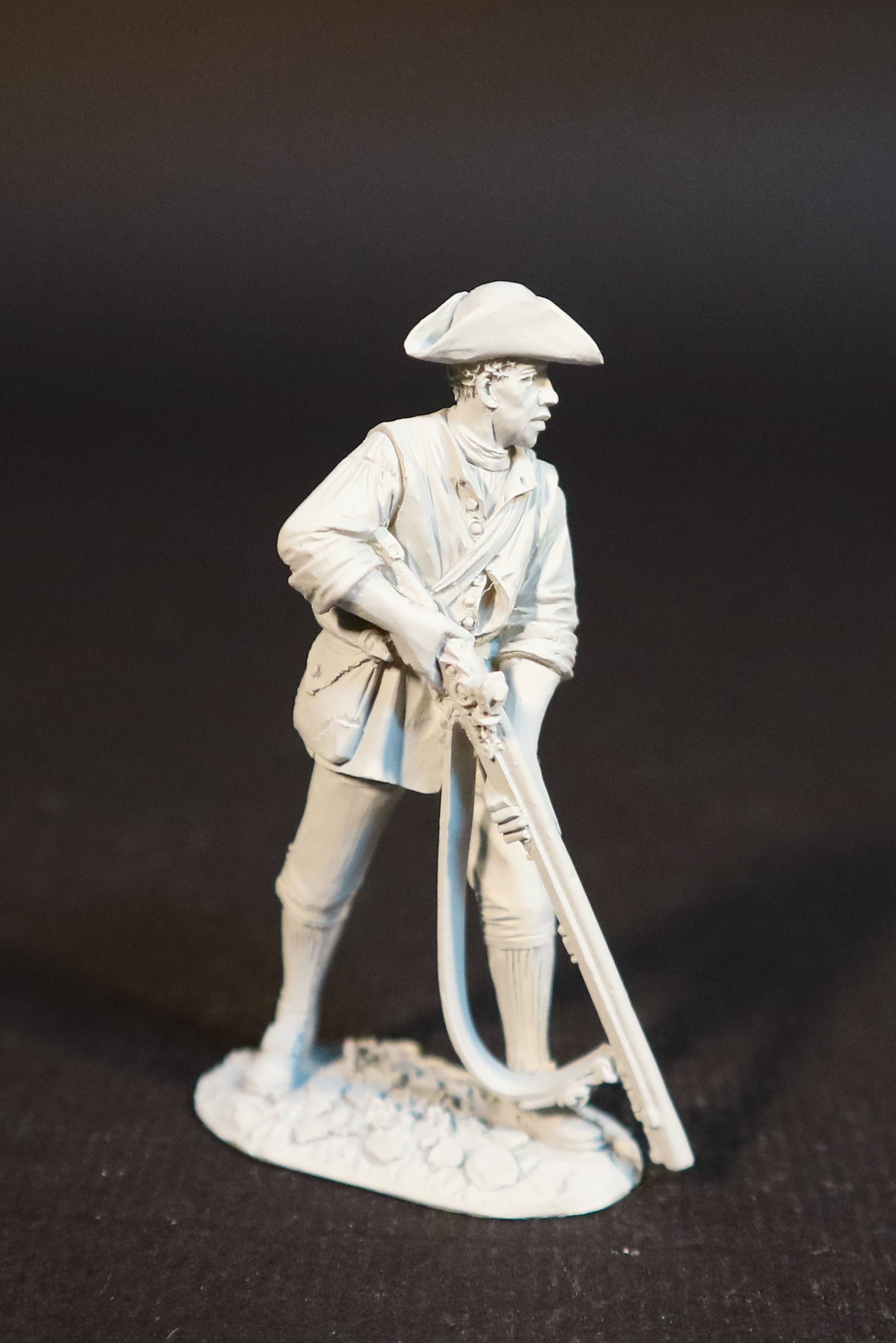
Peter Salem (October 1st, 1750 – August 16th 1816) was an African American from Massachusetts who served as a soldier in the American Revolutionary War.
Born into slavery in Framingham, he was freed by his master, Major Lawson Buckminster, to serve in the local militia. He then enlisted in the Continental Army, serving for nearly five years during the war.
Afterwards he married and worked as a cane weaver.
A monument was erected to him in the late 19th Century at his grave in Framingham.
Salem took part in the war’s first battles at Concord on April 19th 1775. He was on the roll of Captain Simon Edgell’s militia company from Framingham.
On April 24th he enlisted in Captain Drury’s company of Colonel John Nixon’s 6th Massachusetts Regiment.
Salem fought with this company in the Battle of Bunker Hill. According to Samuel Swett, who chronicled the battle, Salem had mortally wounded Marine’s officer John Pitcairn, although this has been disputed.
He was later to have fought at the battles of Saratoga and Stony Point.
MINUTEMEN
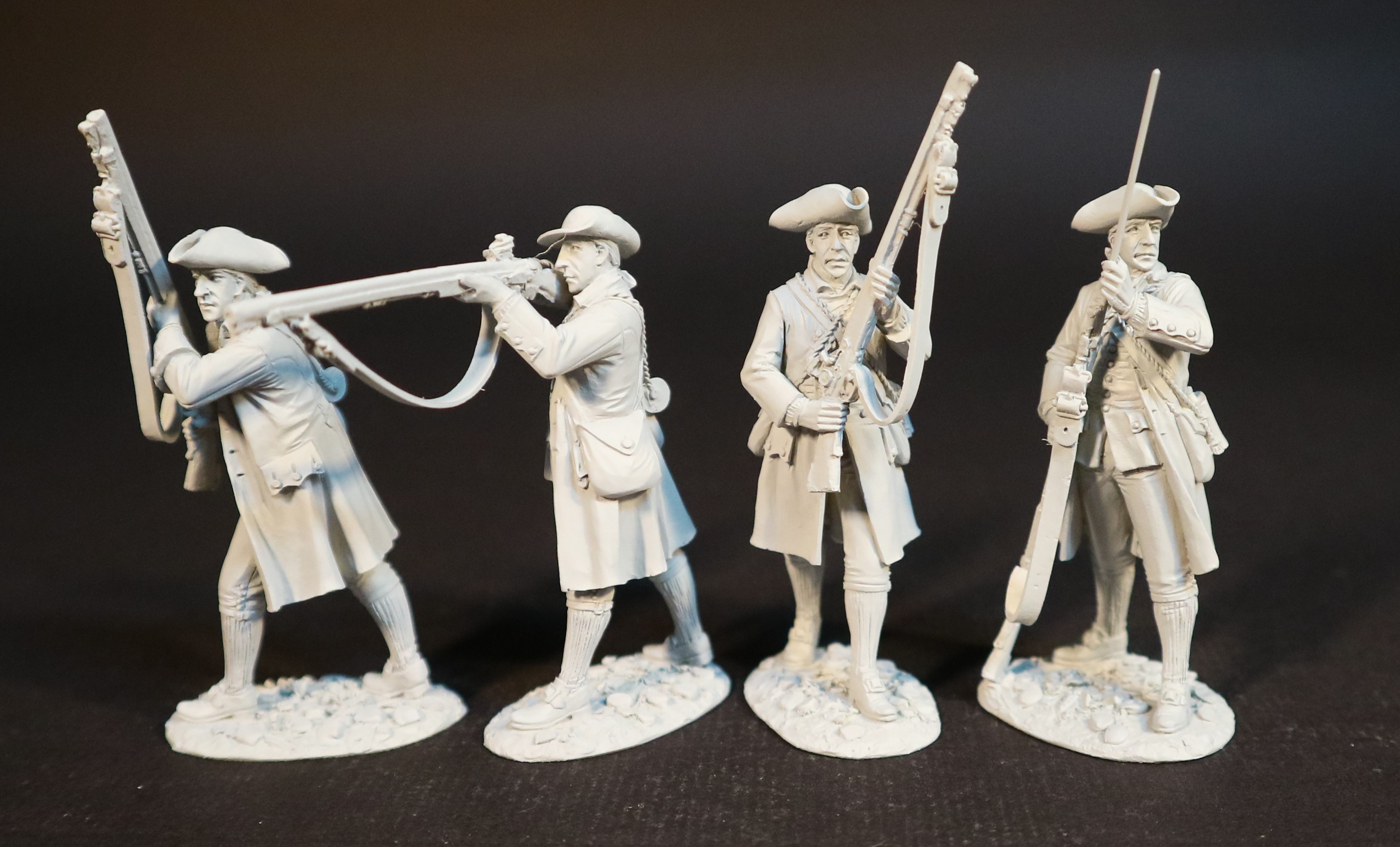
Minutemen were members of the organized New England colonial militia companies trained in weaponry, tactics and military strategies during the American Revolutionary War.
They were known for being ready at a minute’s notice, hence the name.
They provided a highly mobile, rapidly deployed force that enabled the colonies to respond immediately to military threats.
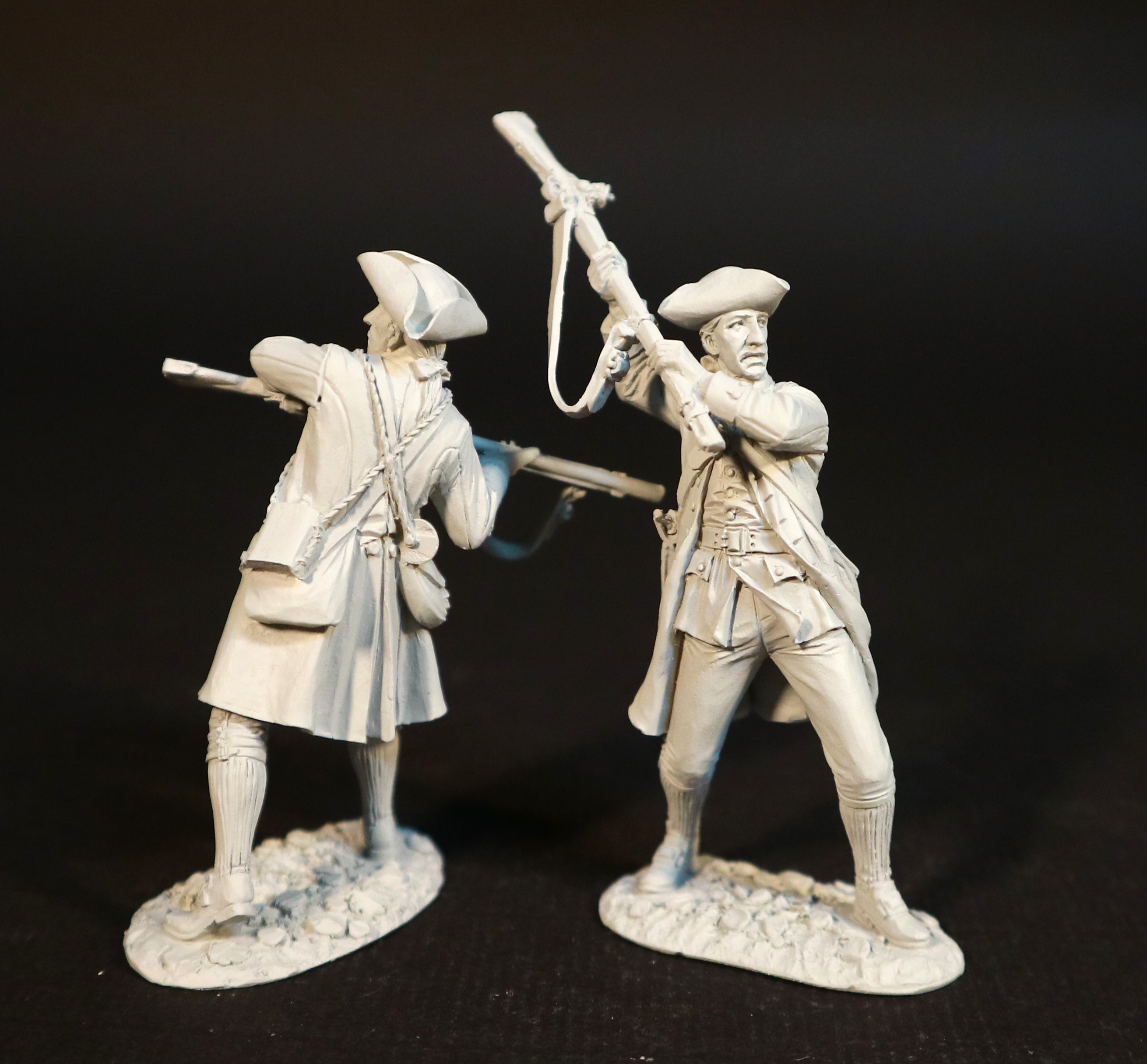
The minutemen were among the first to fight in the American Revolution. Their teams constituted about a quarter of the entire militia. They were generally younger, more mobile, and were provided with weapons and arms by the local governments.
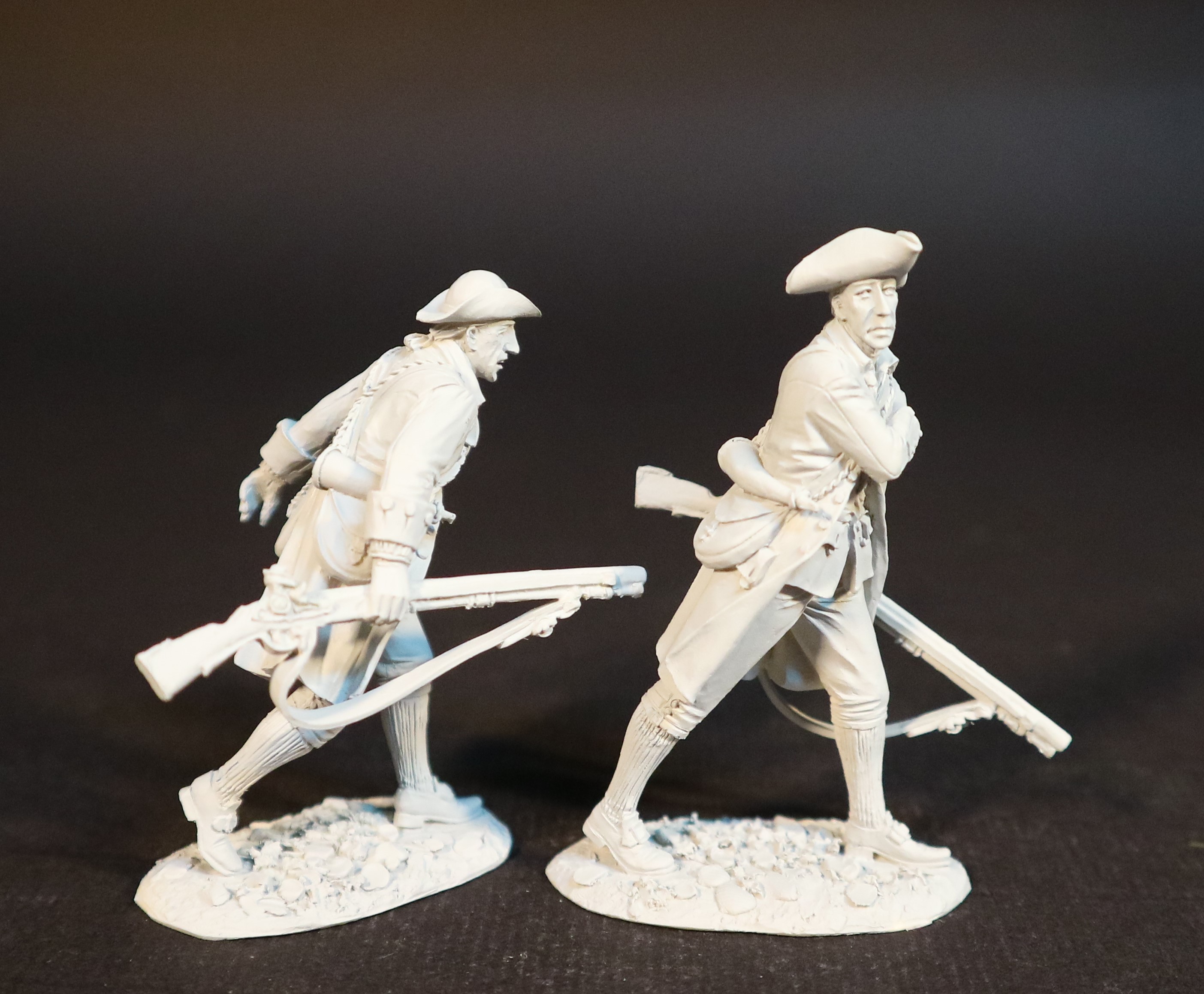
THE DEATH OF GENERAL WARREN
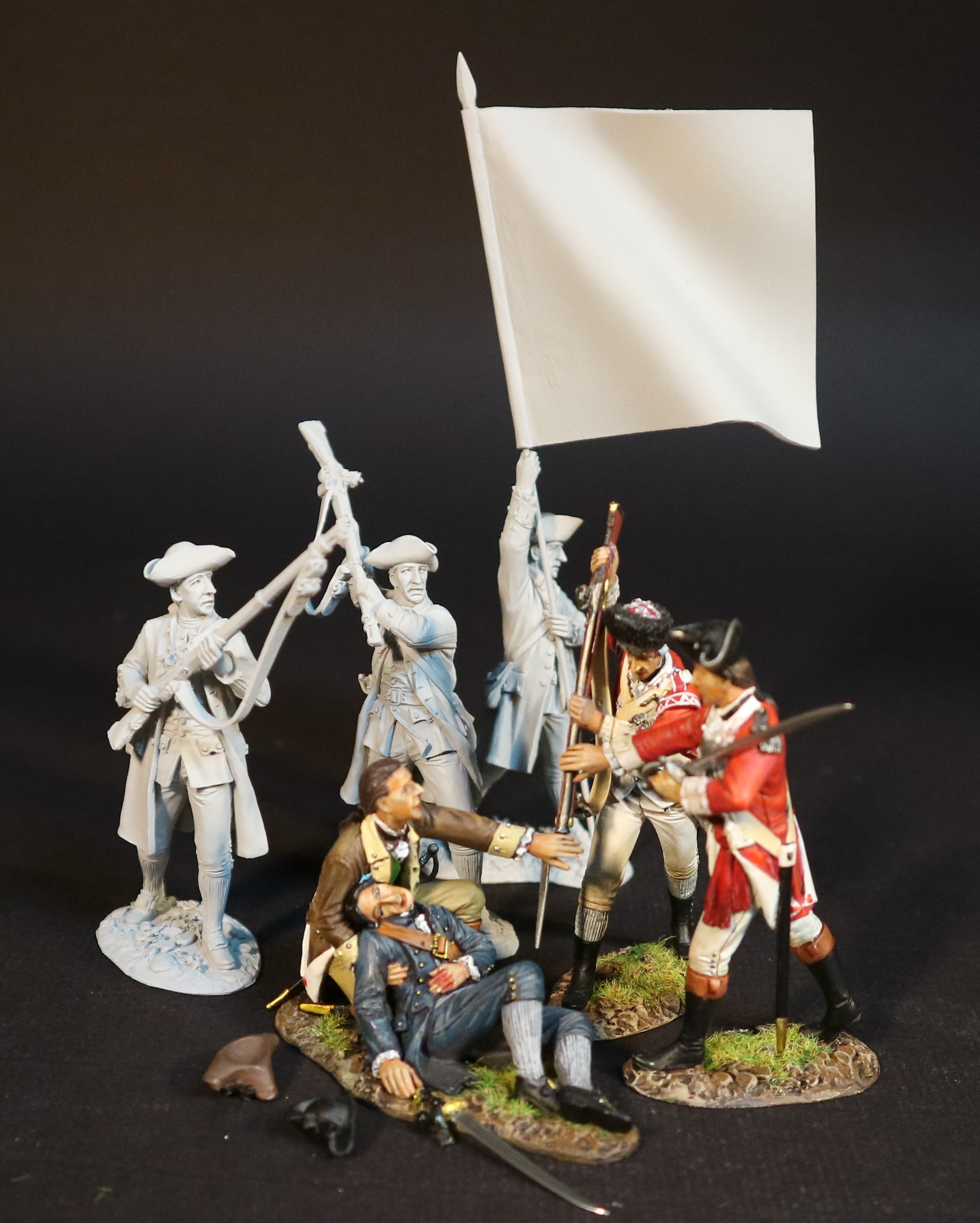
The Death of General Warren set, is inspired by the paintings of the American artist John Trumbull.
Warren was an influential Massachusetts physician and politician, who had been commissioned as a general, but served in the battle as a private. He was killed during or shortly after the storming of the Breed’s Hill redoubt by a British officer.
Artist John Trumbull (1756-1843) was in the colonial army camp at Roxbury, Massachusetts on the day of the battle of Bunker Hill. He watched the battle unfold through field glasses, and later decided to depict one of its central events in several oil paintings.
The paintings are iconic images of the American Revolution. Trumbull painted several versions, one is on view at the Museum of Fine Arts in Boston (dated between 1815 and 1831) This version was commissioned by the Warren family and passed down through the family before being acquired by the museum.
Another larger version (dated 1834) is held by the Wadsworth Atheneum in Hartford, Connecticut.
The first of the Bunker Hill sets will be available from September 2024.
